Ron氏自選のBest 3

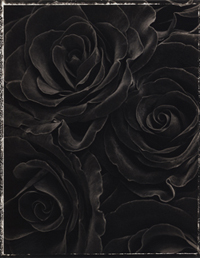 
▲Rosa 'Black Beauty' © 1998(クリックで拡大)
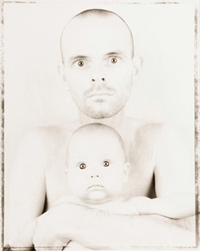 
▲'The Wondering' © 1995(クリックで拡大)
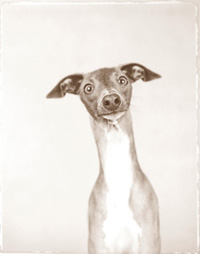 
▲'Mingus' © 2002(クリックで拡大)
Ron氏の花の作品より

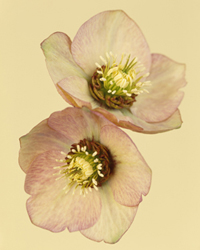 
▲Helleborus x hibridus 'Apricot' © 2005 (クリックで拡大)
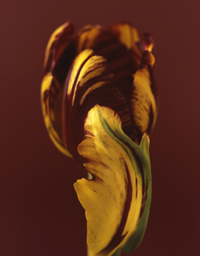 
▲Tulipa 'Absalon' III © 2008(クリックで拡大)
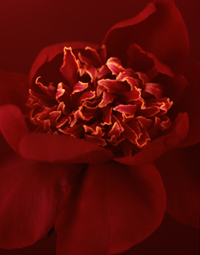 
▲Paeonia 'William Carter' © 2009(クリックで拡大)
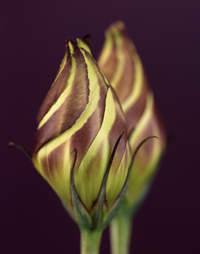 
▲Eustoma grandiflorum © 2010(クリックで拡大)
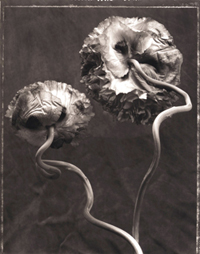 
▲Papaver somniferum © 1996(クリックで拡大)
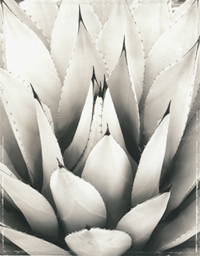 
▲Agave ©1998(クリックで拡大)
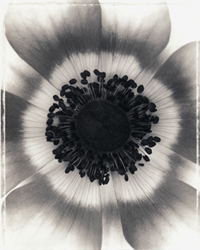 
▲Anemone coronaria © 2001(クリックで拡大)
 © David Rubin © David Rubin
|
|
●Biography バイオグラフィー
−−はじめに生年月日と生まれた場所(国、地域)を教えてください。
1961年3月7日、オランダ人の両親のもとにベネズエラのJudibana生まれ、オランダで育ちました。国籍はオランダです。
−−写真を始めたのは何歳の頃ですか? なぜ写真に興味を持ったかを覚えていますか? また、子供の頃ほかに興味を持っていたものは何でしたか?
幼少時は動物や植物に魅了されていました。自然の中でたくさんの時間を過ごし、植物や動物を採集していました。その後、大学時代に自分は視覚型の人間だと気付きました。私にとっては文字よりも視覚的な印象のほうが影響力があります。写真を撮り始めたのは20代前半でした。
−−最終学歴を教えてください。写真を専門的に学んだのでしょうか?
オランダのデルフトにあるLerarenopleiding ZWNで生物学と健康科学を専攻しました。卒業後は写真の技術とファインアートフォトグラフィーをさらに学ぶためにサンフランシスコにあるアカデミー・オブ・アートカレッジに進みました。
−−若い頃に影響を受けた表現はありますか? 例えば写真、映画、音楽などのジャンルで夢中になったアーティストやミュージシャンはいますか?
私は自然科学がアートよりも大切だと考える家庭で育ち、自然が大好きだったので、生まれ育った町の森や牧場でたくさんの時間を過ごしました。また、音楽も私にとってとても大事なものでした。10代の頃は、ジェネシス、ウイングス、リッキー・リー・ジョーンズ、フリートウッド・マックなどを聴いていました。
−−写真を職業にした理由は何ですか? ほかの職業を選択肢として考えたことはありますか?
サンフランシスコにいたときにファインアートフォトグラファーという職業があり、それで生計を立てられることを知りました。もちろんファインアートフォトグラファーになるのは難しいと知っていましたが、諦めずに続けついに実現することができました。それ以外で私が真剣に考えた別の職業は飛行機のパイロットです(10代のとき)。
−−日本で知っている写真家はいますか? その写真家のどんな点を評価していますか?
山本昌男。日常的な物や出来事から美しく親しみやすい詩情あふれる写真を作り出すことができる写真家だと思います。
やなぎみわ。とても幻想的なポートレイト写真です。精巧に作り込まれた彼女の写真は挑発的な女性の謎めいたポートレイト写真が多く、社会で女性が果たす役割について疑問を投げかけているようでもあります。
細江英公。彼のモノクロ人物写真はたいていコントラストが強く、被写体は自然(もしくは構図)の中で写実的に捉えられています。そして、そうした特徴が作品に冷たく超然として、かつ忘れがたい雰囲気を与えています。
●Work 活動内容
−−現在興味がある被写体や撮影テーマは何ですか?
花の静物写真です。
−−現在、商業写真と作家活動、どちらが主体ですか?
自分の作品はクリエイティブなものだと感じています。ギャラリーを通して作品を売ることで生活をしていますが、時には自分のスタイルに合った商業写真の仕事の依頼を受ける事もあります。
−−最近は一眼レフでもムービーが撮れますが、ムービーに関する仕事や活動は行っていますか?
「生きている」花を使いながらも、それがカラー写真の静物画に見えるように撮るためにCanon 5D Mark Ⅱを使いました。そのときはチューリップを被写体にして10、20分間撮影しました。なぜこうした「生きている、生の」静物を撮ることにしたのかというと、一見ひっそりとした花が実は短時間に急速に花びらを開かせられることを表したかったからです。動画撮影は本当にミステリアスだと思います。
−−ご自分のこれまでの作品でベスト3と思うものを挙げてください。それぞれの選定理由や思い出も教えてください。
1.「Rosa Black Beauty」
「ブラック×ブラック」のシリーズにおいて最も成功した作品の1つです。1990年代半ば、私はモノトーン写真についての実験を多くしており、撮影すると背景に溶け込むように見える植物や花を探していました(たとえば白い花に白の背景、濃い色の花に黒の背景など)。
Rosa Black Beautyというバラを買った時、これほど濃い色のバラを私は見たことがありませんでした。撮影してみるとまさしくこのバラは濃く写り、しかも被写体に奥行きを与えるようなハイライトはまったくありませんでした。また、花びらに息を吹きかけてみると、私の吐息が明るい光を反射し、写真にきれいなハイライトを与えてくれることに気付きました。
2.「The Wondering」
大切な2人の友人の重要な瞬間を写し取った写真です。
2人のうち1人はエイズと戦っており、私はその姿を記録していました。また、もう1人の友人はちょうど美しい女の子の母親になったばかりでした。彼女の赤ちゃんとエイズと戦う友人を見て、「2人とも大きな眼をしていて、髪がない」ということに私は気付き、彼らを一緒に撮影しようと決めました。結果、それぞれ別の方法であっても生き残ることに懸命になっている2人の人間の一生における際立った一瞬を捉えられました。
3.「Mingus」
4×5カメラで「決定的な瞬間」を作り出した好例です。
当時、私は大判カメラで人を撮るのと同じ形式で犬のポートレイトを撮るというシリーズに携わっていました。ミンガスは私が自分の飼い犬を散歩させていたときに公園で出会った小さなイタリアングレイハウンドです。私はミンガスの気性が気に入り、飼い主にスタジオでミンガスを撮影していいか尋ねました。重くて持ち運べない大型カメラを使うのは、このように活発ですばしっこく動き回る動物を撮影するには不向きでしたが、何枚もフイルムを無駄にしてようやく美しい犬の姿をフイルムに収めることができました。
●Tools 現在の道具
−−フイルムカメラは何をお使いですか? 具体的なメーカー名や製品名を教えてください。
ボディは「Sinar f1 4×5カメラ」。
レンズは「Rodenstock Apo-Macro-Sironar 1:5.6 f=180mm」です。
−−一番好きなフイルムは何ですか? フイルム名とその理由を教えてください。
「Polaroid 55 P/N」。理由:階調幅が美しく、ディテールの描写力も本当に秀逸で、なおかつインスタントフイルムだからです。
「Fujichrome RDP Ⅲ 4x5シートフイルム」。理由は植物をカラー撮影するのに最も優れたフイルムだからです。
−−現在デジタルカメラは何をお使いですか? 具体的なメーカー名や製品名を教えてください。複数あればできるだけ多く書いてください。
ボディは「Canon 5D MarkⅡ」。
レンズは「Canonズームレンズ EF 70-200mm 1:2.8」。
もう1台は「Leica D-Lux3」です。
−−現在のメインで使っているカメラは何ですか? その理由も教えてください。
「Sinar f1」+「Rodenstock Apo-Macro-Sironar 1:5.6 f=180mm」です。
理由はディテールをまったく損なうことなく、大きく引き伸ばすことができるので(32×40インチ)、ほとんどの作品はこのカメラで撮影しています。スタジオで静物を撮るのに最適なカメラとレンズの組み合わせです。
−−現在お使いの三脚/一脚、ストロボ、プリンタなどを教えてください。
三脚/一脚は「Bogen3236」。
ストロボは「Dynalite AP 2000-2000WSパワーパック」(ポートレイトと人物写真用)。
プリンタはエプソン「SP9900EFI」(カラー静物写真用)
−−その他撮影に欠かせないカメラ関係の道具はありますか?
特にないです。
−−デジタル写真の場合、ソフトウェアは何をお使いですか?
「Photoshop CS3」と「Lightroom 2」です。
−−現像はご自分で行いますか?
Polaroid 55 P/Nはインスタントフイルムなので、現像の必要がありません。ただ、残念ながらこのフイルムはすでに入手不可能です。Fujichrome RDP Ⅲについては、自分で現像はしていません。
−−レタッチはご自分で行いますか? その理由と主にどんな処理を行うか教えてください。
モノクロ写真は自分でプリントしていますし、自分でそこにレタッチを加えるのが好きです。理由は自分で自在に調整ができるからです。ただ、レタッチはプリント後に白く写ってしまうモノクロプリント上の埃を修正するだけです。
−−フイルムとデジタル、どちらが好きですか? またそれぞれの長所、短所をお聞かせください。
驚くほどディテールを保ったまま大きくプリントがすることできるので、いまだにフイルムカメラと4×5シートフイルムを使って撮影する方が好きです。そのほうがCanon 5D MarkⅡを使って同サイズに拡大するよりも(技術的に)クオリティの高いプリントができます。同等のクオリティでプリントができる4×5カメラ用のデジタルパックはありますが、購入するにはまだかなり高額です。
●Schedule 今後の活動
−−展覧会や写真集など、2011年の活動予定をお聞かせください。
すでに決まっている今後の予定。
3月:テネシー州ノックスビル「The Blackberry Farm」でのアーティスト・イン・レジデンス。
4月:オレゴン州ポートランド、Froelick Galleryで新作の展覧会「Proof」
10月:ポーランドのBielsko-Bialaで開催される「Foto Art Festival」への招待フォトグラファー。
−−今後撮ってみたい被写体は何ですか?
今後、自分が何を撮影したいと思うかはまだ分かりませんが、おそらく植物に関連したもの。
−−日本の若手のフォトグラファーに一言お願いします。
自分にとって大事なものを撮り、自分自身がよく知っているものを被写体に選んでください。
−−ありがとうございました。
-Biography-
Q1. Please tell us your date of birth and where you were born.
I was born to Dutch parents on March 7, 1961 in Judibana, Venezuela and raised in the Netherlands. My nationality is Dutch.
Q2. When did you start taking photos? Do you remember why you developed an interest in taking pictures? What else were you interested in as a child?
As a child, animals and plants mesmerized me. I spent a lot of time in nature, collecting plants and animals. Later in life, during college, I discovered that I was a visually oriented person. Visual impressions have a much bigger effect on me than written words. I was in my early 20’s when I started to take photographs.
Q3. Please let us know your academic background.
Did you major in photography?
In college I majored in Biology and Health Sciences at the “Lerarenopleiding ZWN” in Delft, the Netherlands. After completing college, I attended the Academy of Art College in San Francisco, CA to develop my photographic skills and learn more about fine art photography.
Q4. What creative expressions influenced you in your youth? Were you crazy about any particular photographers, movie stars, musicians or other artists?
I grew up in a family in which science was more important than art. Since I loved nature, I spent a lot of time in the forests and at a farm in the town where I grew up. Music was very important to me as well. As a teenager I listened to Genesis, Wings, Rickie Lee Jones, Fleedwood Mac and others.
Q5. Why did you choose photography as your occupation? Have you ever considered any other options?
When I lived in San Francisco, I learned that there were opportunities to make a living as a fine art photographer. I knew it would be difficult to establish myself as a fine art photographer, but I persisted and eventually succeeded. The only other occupation I seriously considered (and this is when I was a teenager) was to become an airline pilot.
Q6. Please let us know any Japanese photographers you are familiar with. What is your evaluation of them?
who? Masao Yamamoto
evaluation: Someone who creates beautiful and intimate photographic poetry from everyday objects and occurrences
who? Miwa Yanagi
evaluation: Fantastic portrait photography. Her elaborately staged photographs are often mysterious portraits of women that are quite provocative and seem to ask questions about the role women play in our society .
who? Eikoh Hosoe
evaluation: His B&W figure work is often high in contrast and graphic in nature (and composition ), which give his photographs a cold and detached--but memorable--quality.
-Works-
Q1. In what objects and themes are you interested right now?
Floral still lifes.
Q2. Which is your current mainstream, commercial photography or non-commercial creative activity?
I consider the work I do creative. I make a living selling my work through photography galleries, but sometimes I am commissioned to do commercial work when it suits my style.
Q3. Now a single-lens reflex camera can be used to make movies. Are you working on any projects now where you make use of SRL for making a movie?
I have used my Canon 5D Mark II to create “live “ flower still lifes in which the images look like my (color) photographic still lifes. The clips are between 10 and 20 minutes in duration and tulips are the subject matter. The reason for showing these “live” still lifes is to show how quickly a seemingly still flower can open up its petals in such a short time. The clips look truly mysterious.
Q4. Please select the 3 best works from all over your works. Then please let us know the reason why you think they are the best, and write some memories or episodes about them.
1. name of the work; (SL 48X) Rosa ‘Black Beauty’.
reason: One of my most successful ‘Black-on-Black’ images.
memory: In the mid 90’s I experimented a lot with monotone imagery. I was looking for plants and flowers that, when photographed, would visually disappear in to the background. (for example, white flowers on white backgrounds, dark flowers on black backdrops.
When I bought Rosa ‘Black Beauty,’ I had never seen this very dark colored rose before. When I photographed it, the result certainly looked dark, but without any highlights to give the image depth. I discovered that if I breathed on the petal, the condensation of my breath reflected more light and added beautiful highlights to the photograph.
2. name of the work: ‘The Wondering’
reason: The photograph represented a very important moment in the lives of two dear friends.
memory: I was documenting a friend’s fight with AIDS. Another friend had just become a mother of a beautiful girl. The baby and the friend with AIDS visually reminded me of each other: they both had the same big eyes and both had no hair. I decided to photograph them together. The result was a striking moment in the lives of two individuals, each dealing with survival in very different ways.
3. name of the work: ‘Mingus’
reason: A nice example of a ‘decisive moment’ created with a 4”x5” camera.
memory: I was working on a small series of dog portraits photographing them the same formal way one would photograph people with a large format camera. Mingus was a small Italian Greyhound I met in a park while walking my own dog. I loved the dog’s spirit and asked his owner if I could photograph him in the studio. Using a heavy and stationary large format camera was a very bad choice to photograph such a lively and fast moving animal. After many wasted sheets of film I finally caught the beautiful dog on film.
-Tools-
Q1. What model of film camera do you currently use? Please let us know the specific model. If you have more than one camera, please list as many as possible.
body: Sinar F1 4x5 camera.
lens: Rodenstock Apo-Macro-Sironar 1:5.6 f=180mm.
Q2. What brand of film do you like the best?
name: Polaroid 55 P/N.
why? This film has beautiful tonal range, renders extremely fine detail, and processes instantly.
name: Fujichrome RDP III 4”x5” sheet film.
why? This is an excellent film for photographing plants in color.
Q3. What brand of digital camera do you currently use? Please let us know the specific model. If you have use more than one, please list as many as you can.
body: Canon 5D Mark II.
lens: Canon Zoom Lens EF 70-200mm 1:2.8.
body: Leica D-Lux 3.
lens: --
Q4. Which camera is the main one you use now? Why?
body: Sinar F1. Most of my work is photographed with this camera, because it allows me to make very big enlargements (32”x40”) without losing any detail.
lens: Rodenstock Apo-Macro- Sironar 1:5.6 f=180mm.
reason: This is the perfect combination of camera and lens for studio still life photography.
Q5. Please let us know accessories you use.
tripod/monopod: Bogen 3236.
strobe light: Dynalite AP 2000-2000WS Power Pack (for portraits and figure photography only).
printer: Epson SP9900EFI (for color still lifes).
Q6. Are there any other essential accessories or tools for you?
I don’t use any other essential accessories or tools.
Q7. When you use a digital camera, what software do you mostly use (e.g. Photoshop, Capture One, etc)?
Adobe Photoshop CS3 and Adobe Lightroom 2.
Q8. Do you develop film on your own?
Polaroid 55 P/N is an instant film; it develops itself. Unfortunately, the film is not available anymore. The Fujichrome RDP III I don’t develop myself.
Q9. How about retouching? What is the reason you do/don’t retouch yourself? How do you retouch or have photos retouched?
I print my own B/W photographs and like to retouch the photographs myself, because it gives me complete control. I only retouch dust spots on the B/W prints that appear white on the photographs.
Q10. Which do you prefer, a film camera or a digital camera? What do you feel about their pros and cons?
I still prefer to work with a film camera and to use 4”x5” sheet film. It allows me to make very large, incredibly detailed prints. These prints are of higher (technical) quality than enlargements of equal size made with the Canon 5D Mark II. Digital backs are available for 4”x5” cameras that can create equally beautiful prints, but they are still very expensive to purchase.
-Upcoming works/projects-
Q1. What are your prospective projects in 2011? (e.g. exhibitions, projects, publications etc.)
Confirmed engagements for 2011 are:
-March: Artist in residence at “The Blackberry Farm”, Knoxville, TN.
-April: “Proof”, an exhibition of new work at the Froelick Gallery, Portland, OR.
-October: Featured Photographer at the “Foto Art Festival”, Bielsko-Biala, Poland.
Q2. What object would you like to photograph in the future?
I am not sure what I want to photograph in the future, but it will likely be related to plants.
Q3. Please give us any comments for young Japanese photographers.
Photograph what is close to your heart and choose a subject matter you know a lot about.
Thank you very much!
|




